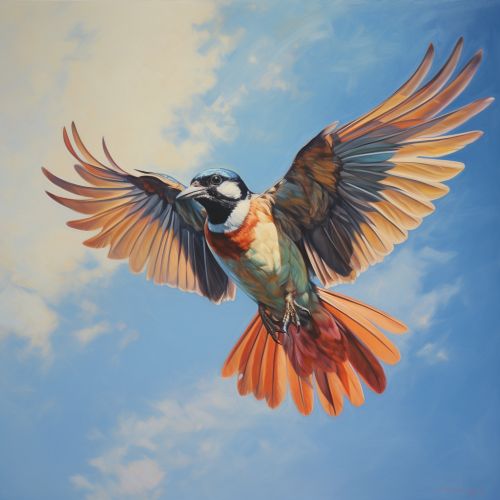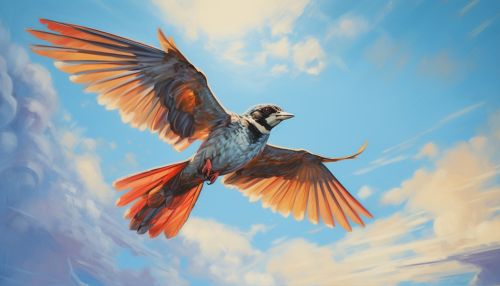Aerodynamics of Bird Flight
Introduction
Aerodynamics is the study of how gases interact with moving bodies. Because the gas that we encounter most is air, aerodynamics is primarily concerned with the forces of drag and lift, which are caused by air passing over and around solid bodies. Birds are a group of warm-blooded vertebrates constituting the class Aves, characterized by feathers, toothless beaked jaws, the laying of hard-shelled eggs, a high metabolic rate, a four-chambered heart, and a strong yet lightweight skeleton. Birds live worldwide and range in size from the 5.5 cm (2.2 in) bee hummingbird to the 2.8 m (9 ft 2 in) ostrich. They rank as the world's most numerically-successful class of tetrapods, with approximately ten thousand living species, more than half of these being passerines, sometimes known as perching birds or, less accurately, as songbirds. The study of birds is called ornithology and has been an important part of zoology and ecology. Understanding the aerodynamics of bird flight can provide insights into the evolution of flight, the physical forces at work in the environment, and the physical characteristics that enable birds to fly.


Physics of Flight
Birds fly by exerting force against the air. This force is generated by the movement of the wings, which are shaped in a specific way to produce lift. The shape of a bird's wing is similar to the aerofoil design used in modern aircraft. The upper surface of the wing is curved, which causes the air to flow faster over the top of the wing than below it. This difference in speed creates a pressure differential: the pressure above the wing is lower than the pressure below it, and this difference creates lift. This principle is known as Bernoulli's principle.
Wing Shape and Flight Style
Different birds have different wing shapes, each suited to the bird's particular style of flight. For example, birds that need to fly fast, such as falcons and swifts, have long, thin wings for rapid wing beats. Birds that soar, like eagles and vultures, have broad, long wings that allow them to ride thermal currents without flapping. Birds that need to maneuver through dense foliage, like sparrows and finches, have short, rounded wings that allow for quick changes in direction.
Energy Efficiency
Birds have evolved to fly in a manner that minimizes the energy cost. This is achieved through a variety of means, such as the use of thermal currents to gain altitude, the use of updrafts created by wind against cliffs or other large objects, and the use of specific flight patterns. For example, many birds use a flight pattern known as a "bounding" or "flap-bounding" flight, in which the bird alternates between flapping its wings and folding them against its body. This pattern allows the bird to save energy by taking advantage of the momentum created during the flapping phase to glide during the folding phase.
Flight Control
Birds control their flight through a variety of means. They can change the shape of their wings to alter lift and drag characteristics. They can also change the angle at which they hold their wings, known as the angle of attack, to control lift and speed. Additionally, birds can use their tail feathers to control their direction and stability.
Evolution of Bird Flight
The evolution of bird flight has been a topic of much debate among scientists. The most widely accepted theory is that birds evolved from small, feathered dinosaurs. The feathers initially served as insulation, but eventually evolved into flight surfaces. The exact sequence of this evolution is still a matter of ongoing research.
